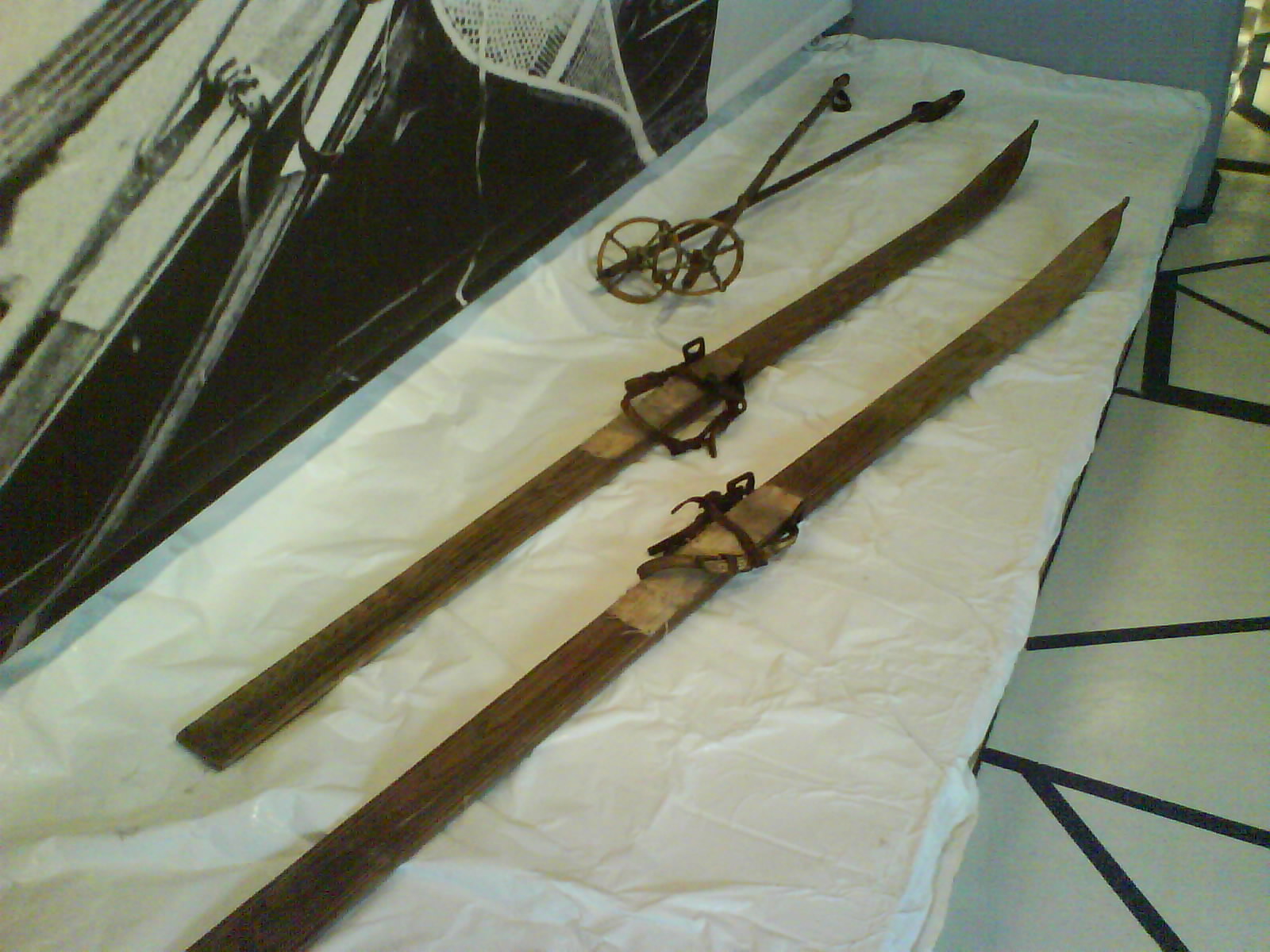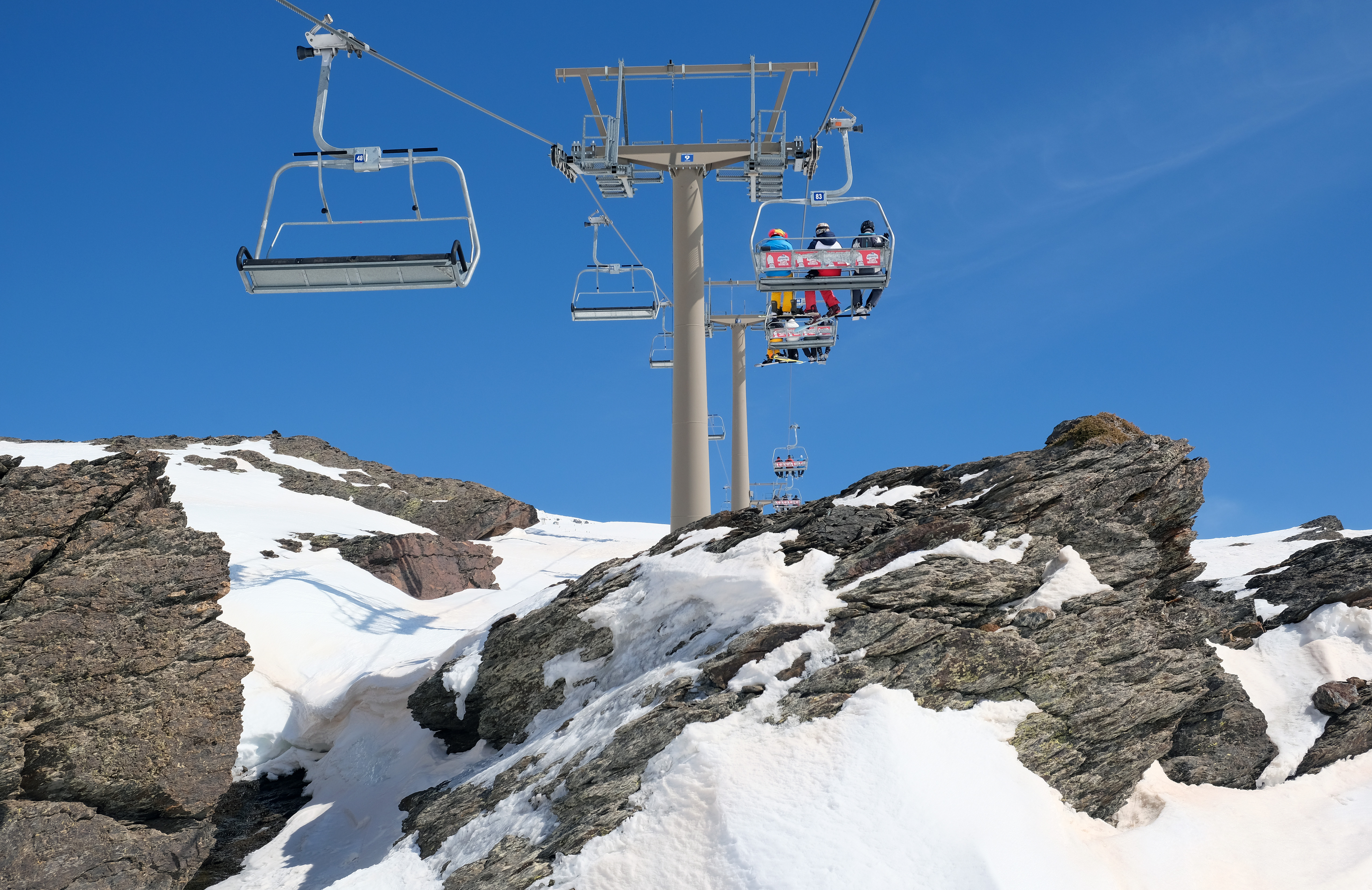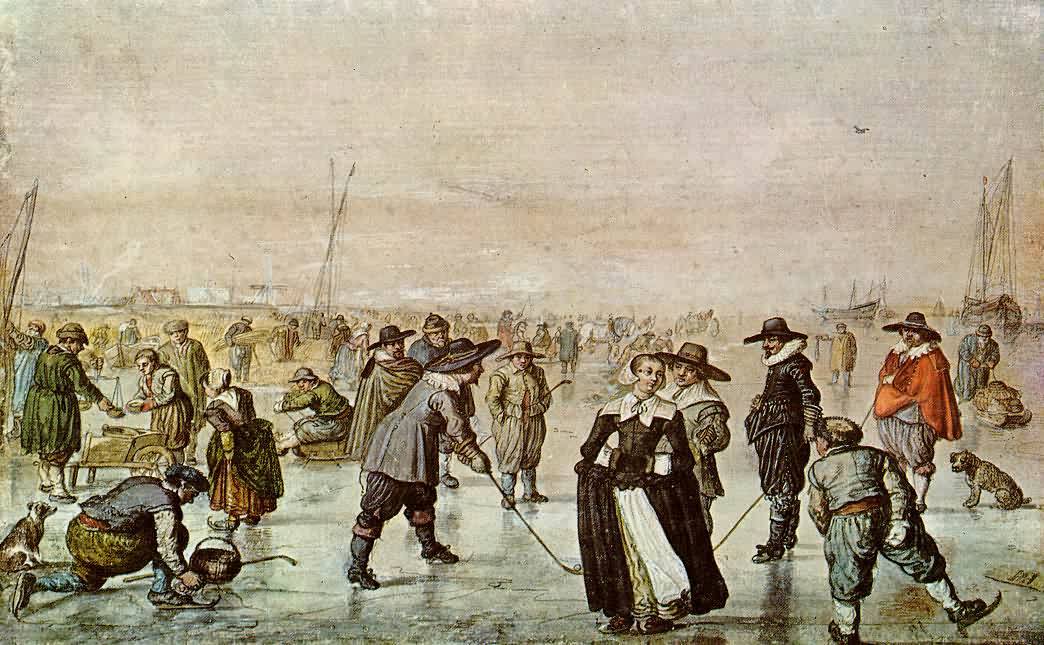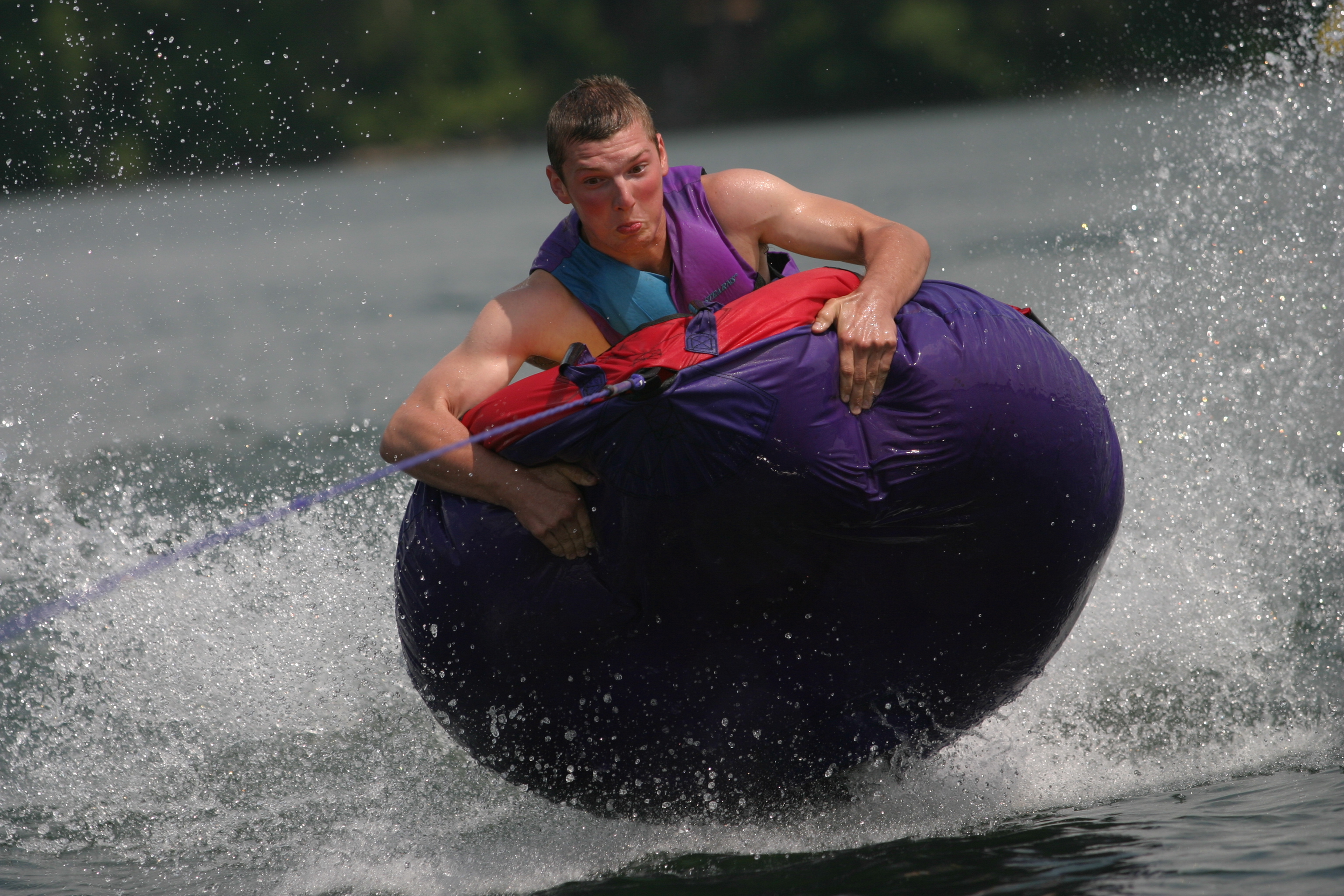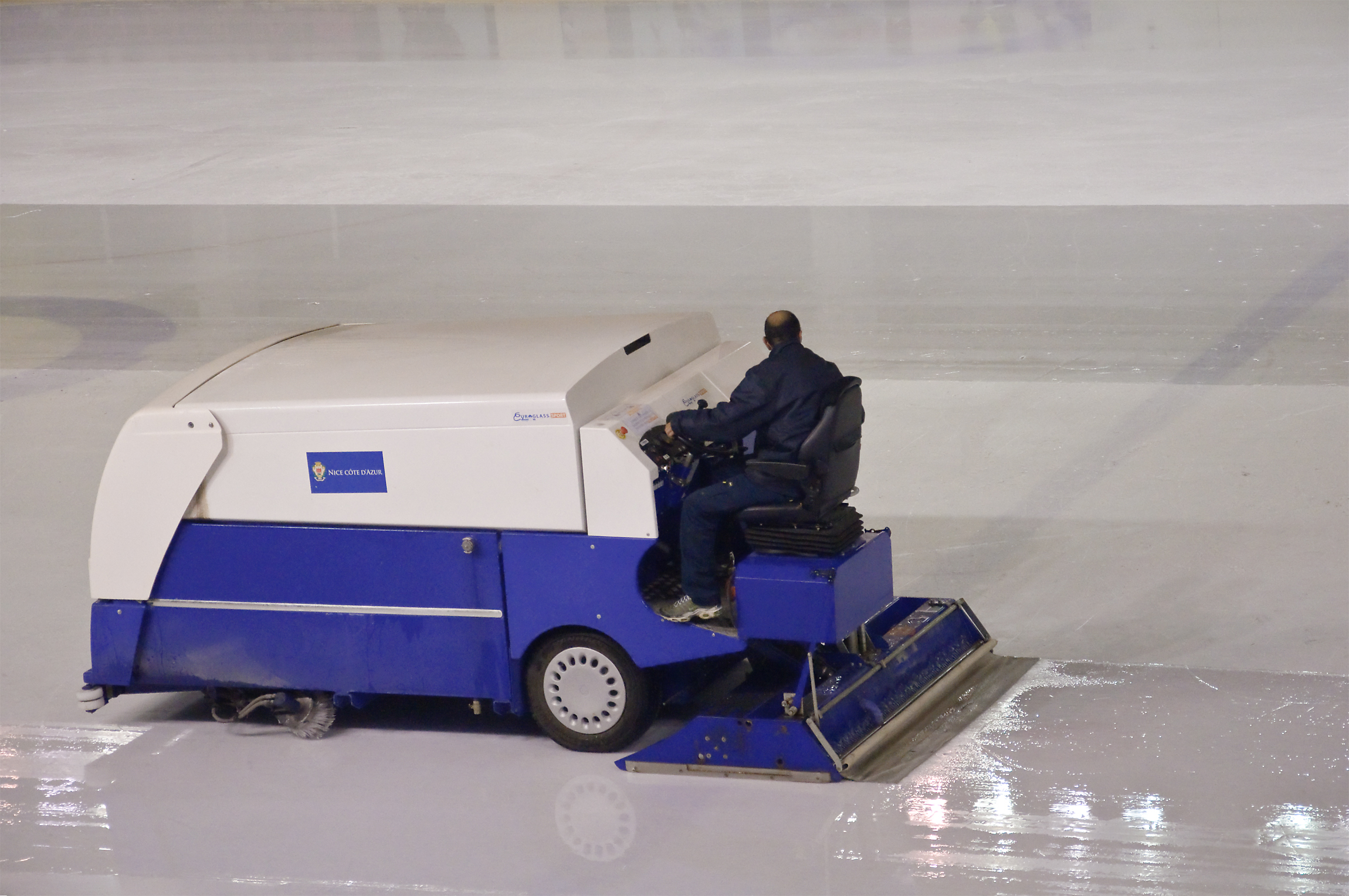|
King Pine
King Pine Ski Area is a ski resort located in Madison, Carroll County, New Hampshire. King Pine has 45 skiable acres, with six ski lifts and seventeen trails. King Pine also has 22 km of skate- and track-groomed cross country trails as well as snowshoeing, Zamboni-groomed ice skating, snowtubing, and a PSIA-certified ski school. Amenities Skiing and snowboarding King Pine features 17 trails, 6 lifts, easy-to-navigate terrain, base lodge amenities, cafeteria, tavern, slopeside lodging, and has been in operation for over 50 years. 44% of King Pine's terrain is designed for novice and 31% for intermediate skiers and riders. Adventure can be found on Pitch Pine (one of New England's steepest trails) or in the Twisted Pine Terrain Park, with hits, rails and challenging elements. Night skiing King Pine offers illuminated trails for skiing and snowboarding in the evening. Hours of operation vary. Eight trails are open at night and are served by two triple chairlifts, Powder ... [...More Info...] [...Related Items...] OR: [Wikipedia] [Google] [Baidu] |
Madison, New Hampshire
Madison is a town in Carroll County, New Hampshire, United States. The population was 2,565 at the 2020 census. Madison includes the village of Silver Lake and the village district of Eidelweiss. History The area was one of the first to have land grants set aside for soldiers who had served in the French and Indian War. The land covered by these grants, parts of Eaton and Albany, was incorporated in 1852 as "Madison", in honor of President James Madison, who was born 100 years earlier. Geography According to the United States Census Bureau, the town has a total area of , of which are land and are water, comprising 5.84% of the town. Madison is drained by Forrest Brook and Silver Lake to the south and by Pequawket Brook to the north. The entire town is part of the Saco River watershed. The highest point in Madison is the summit of Lyman Mountain in the eastern part of the town, at above sea level. Demographics As of the census of 2000, there were 1,984 people, 777 hou ... [...More Info...] [...Related Items...] OR: [Wikipedia] [Google] [Baidu] |
Ski Trail Rating Symbol-green Circle
A ski is a narrow strip of semi-rigid material worn underfoot to glide over snow. Substantially longer than wide and characteristically employed in pairs, skis are attached to ski boots with ski bindings, with either a free, lockable, or partially secured heel. For climbing slopes, ski skins (originally made of seal fur, but now made of synthetic materials) can be attached at the base of the ski. Originally intended as an aid to travel over snow, they are now mainly used recreationally in the sport of skiing. Etymology and usage The word ''ski'' comes from the Old Norse word which means "cleft wood", "stick of wood" or "ski". In Old Norse common phrases describing skiing were ''fara á skíðum'' (to travel, move fast on skis), ''renna'' (to move swiftly) and ''skríða á skíðum'' (to stride on skis). In modern Norwegian the word ''ski'' has largely retained the Old Norse meaning in words for split firewood, wood building materials (such as bargeboards) and roundpole fence ... [...More Info...] [...Related Items...] OR: [Wikipedia] [Google] [Baidu] |
Ski Trail Rating Symbol-blue Square
A ski is a narrow strip of semi-rigid material worn underfoot to glide over snow. Substantially longer than wide and characteristically employed in pairs, skis are attached to ski boots with ski bindings, with either a free, lockable, or partially secured heel. For climbing slopes, ski skins (originally made of seal fur, but now made of synthetic materials) can be attached at the base of the ski. Originally intended as an aid to travel over snow, they are now mainly used recreationally in the sport of skiing. Etymology and usage The word ''ski'' comes from the Old Norse word which means "cleft wood", "stick of wood" or "ski". In Old Norse common phrases describing skiing were ''fara á skíðum'' (to travel, move fast on skis), ''renna'' (to move swiftly) and ''skríða á skíðum'' (to stride on skis). In modern Norwegian the word ''ski'' has largely retained the Old Norse meaning in words for split firewood, wood building materials (such as bargeboards) and roundpole fence ... [...More Info...] [...Related Items...] OR: [Wikipedia] [Google] [Baidu] |
Ski Trail Rating Symbol-black Diamond
A ski is a narrow strip of semi-rigid material worn underfoot to glide over snow. Substantially longer than wide and characteristically employed in pairs, skis are attached to ski boots with ski bindings, with either a free, lockable, or partially secured heel. For climbing slopes, ski skins (originally made of seal fur, but now made of synthetic materials) can be attached at the base of the ski. Originally intended as an aid to travel over snow, they are now mainly used recreationally in the sport of skiing. Etymology and usage The word ''ski'' comes from the Old Norse word which means "cleft wood", "stick of wood" or "ski". In Old Norse common phrases describing skiing were ''fara á skíðum'' (to travel, move fast on skis), ''renna'' (to move swiftly) and ''skríða á skíðum'' (to stride on skis). In modern Norwegian the word ''ski'' has largely retained the Old Norse meaning in words for split firewood, wood building materials (such as bargeboards) and roundpole fence ... [...More Info...] [...Related Items...] OR: [Wikipedia] [Google] [Baidu] |
Chairlift
An elevated passenger ropeway, or chairlift, is a type of aerial lift, which consists of a continuously circulating steel wire rope loop strung between two end terminals and usually over intermediate towers, carrying a series of chairs. They are the primary onhill transport at most ski areas (in such cases referred to as 'ski lifts'), but are also found at amusement parks, various tourist attractions, and increasingly in urban transport. Depending on carrier size and loading efficiency, a passenger ropeway can move up to 4000 people per hour, and the fastest lifts achieve operating speeds of up to or . The two-person double chair, which for many years was the workhorse of the ski industry, can move roughly 1200 people per hour at rope speeds of up to . The four person detachable chairlift ("high-speed quad") can transport 2400 people per hour with an average rope speed of . Some bi and tri cable elevated ropeways and reversible tramways achieve much greater operating speeds ... [...More Info...] [...Related Items...] OR: [Wikipedia] [Google] [Baidu] |
Ski Resort
A ski resort is a resort developed for skiing, snowboarding, and other winter sports. In Europe, most ski resorts are towns or villages in or adjacent to a ski area – a mountainous area with pistes (ski trails) and a ski lift system. In North America, it is more common for ski areas to exist well away from towns, so ski resorts usually are destination resorts, often purpose-built and self-contained, where skiing is the main activity. Ski resort Ski resorts are located on both Northern and Southern Hemispheres on all continents except Antarctica. They typically are located on mountains, as they require a large slope. They also need to receive sufficient snow (at least in combination with artificial snowmaking, unless the resort uses dry ski slopes). High concentrations of ski resorts are located in the Alps, Scandinavia, western and eastern North America, and Japan. There are also ski resorts in the Andes, scattered across central Asia, and in Australia and New Zealand. Ext ... [...More Info...] [...Related Items...] OR: [Wikipedia] [Google] [Baidu] |
Ski Lift
A ski lift is a mechanism for transporting skiers up a hill. Ski lifts are typically a paid service at ski resorts. The first ski lift was built in 1908 by German Robert Winterhalder in Schollach/Eisenbach, Hochschwarzwald. Types * Aerial lifts transport skiers while suspended off the ground. Aerial lifts are often bicable ropeways, the "bi-" prefix meaning that the cables have two different functions (carrying and pulling). **Aerial tramways ** Chairlifts and detachable chairlifts ** Funifors ** Funitels ** Gondola lifts ** Hybrid lifts * Surface lifts, including T-bars, magic carpets, and rope tows. * Cable railways, including funiculars * Helicopters are used for heliskiing and snowcats for snowcat skiing. This is backcountry skiing or boarding accessed by a snowcat or helicopter instead of a lift, or by hiking. Cat skiing is less than half the cost of heliskiing, more expensive than a lift ticket but is easier than ski touring. Cat skiing is guided. Skiing at select, ... [...More Info...] [...Related Items...] OR: [Wikipedia] [Google] [Baidu] |
Nordic Skiing
Nordic skiing encompasses the various types of skiing in which the toe of the ski boot is fixed to the Ski binding, binding in a manner that allows the heel to rise off the ski, unlike alpine skiing, where the boot is attached to the ski from toe to heel. Recreational disciplines include cross-country skiing and Telemark skiing. Winter Olympic Games, Olympic events are Cross-country skiing (sport), competitive cross-country skiing, ski jumping and Nordic combined — an event combining cross-country skiing and ski jumping. The FIS Nordic World Ski Championships host these sports every odd-numbered year, but there are also separate championships in other events, such as Telemark skiing and ski flying. Biathlon combines cross-country skiing and rifle shooting, but is not included as a Nordic discipline under the rules of the International Ski Federation (FIS). Instead, it comes under the jurisdiction of the International Biathlon Union. The biomechanics of competitive cross-country ... [...More Info...] [...Related Items...] OR: [Wikipedia] [Google] [Baidu] |
Snowshoe
Snowshoes are specialized outdoor gear for walking over snow. Their large footprint spreads the user's weight out and allows them to travel largely on top of rather than through snow. Adjustable bindings attach them to appropriate winter footwear. Traditional snowshoes have a hardwood frame filled in with rawhide latticework. Modern snowshoes are made of lightweight metal, plastic, and other synthetic materials. In the past, snowshoes were essential equipment for anyone dependent on travel in deep and frequent snowfall, such as fur trappers. They retain that role in areas where motorized vehicles cannot reach or are inconvenient to use. However, their greatest contemporary use is for recreation. Snowshoeing is easy to learn and in appropriate conditions is a relatively safe and inexpensive recreational activity. However, doing so in icy, steep terrain requires both advanced skill and mountaineering-style pivoting-crampon snowshoes. Development Origins Before people built ... [...More Info...] [...Related Items...] OR: [Wikipedia] [Google] [Baidu] |
Ice Skating
Ice skating is the self-propulsion and gliding of a person across an ice surface, using metal-bladed ice skates. People skate for various reasons, including recreation (fun), exercise, competitive sports, and commuting. Ice skating may be performed on naturally frozen bodies of water, such as ponds, lakes, canals, and rivers, and on man-made ice surfaces both indoors and outdoors. Natural ice surfaces used by skaters can accommodate a variety of winter sports which generally require an enclosed area, but are also used by skaters who need ice tracks and trails for distance skating and speed skating. Man-made ice surfaces include ice rinks, ice hockey rinks, bandy fields, ice tracks required for the sport of ice cross downhill, and arenas. Various formal sports involving ice skating have emerged since the 19th century. Ice hockey, bandy, rinkball, and ringette, are team sports played with, respectively, a flat sliding puck, a ball, and a rubber ring. Synchronized skating ... [...More Info...] [...Related Items...] OR: [Wikipedia] [Google] [Baidu] |
Tubing (recreation)
Tubing, also known as inner tubing, bumper tubing, towed tubing, or kite tubing, is a recreational activity where an individual rides on top of an inner tube, either on water, snow, or through the air. The tubes themselves are also known as "donuts" or "biscuits" due to their shape. Variations Water Tubing on water generally consists of two forms: towed and free-floating, also known as river tubing. There is also water skiing. According to ''Time Magazine'', tubing was purportedly invented on the Black River in Missouri by Jan & Harriet Wright of Poplar Bluff, MO sometime in the middle of the 20th century, but examples of the practice were published as early as 1916, when the popularization of the automobile meant a large supply of rubber inner tubes was available to the general public. Towed tubing usually takes place on a large body of water such as a lake or river. One or more tube riders (often called "tubers") tether their tubes to a powered watercraft such as a motor ... [...More Info...] [...Related Items...] OR: [Wikipedia] [Google] [Baidu] |
Ice Resurfacer
An ice resurfacer is a vehicle or hand-pushed device used to clean and smooth the surface of a sheet of ice, usually in an ice rink. The first ice resurfacer was developed by American inventor and engineer Frank Zamboni in 1949 in the city of Paramount, California. As such, an ice resurfacer is often referred to as a "Zamboni" as a genericized trademark. History The first ice resurfacer was invented by Frank Zamboni, who was originally in the refrigeration business. Zamboni created a plant for making ice blocks that could be used in refrigeration applications. As the demand for ice blocks waned with the spread of compressor-based refrigeration, he looked for another way to capitalize on his expertise with ice production. In 1939, Zamboni built the Iceland Skating Rink in Paramount, California. In order to resurface the skating rink, 3 or 4 workers had to scrape, wash, and squeegee the ice. A thin layer of water was then added for the fresh ice. This process was extremely time ... [...More Info...] [...Related Items...] OR: [Wikipedia] [Google] [Baidu] |

